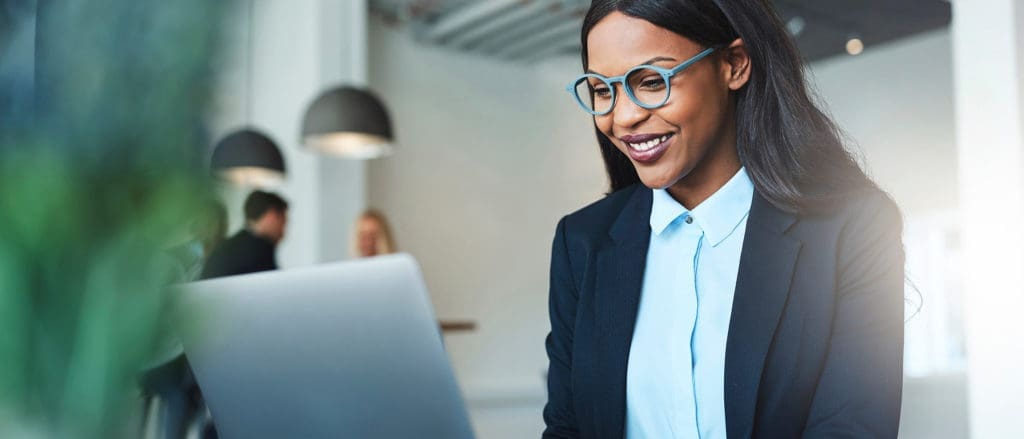Table of contents
- What is Lean Six Sigma?
- Six Sigma vs. Lean Six Sigma
- The History of Six Sigma
- What are the Six Sigma Principles of Excellence?
- Six Sigma Methodology Resources
- DMADV
- DFSS
- Six Sigma Analysis Tools
- Six Sigma Certification Levels
- Top Reasons to Get a Six Sigma Certification
- The Importance of Six Sigma Training
- How to Get Started
- Related articles
What is Lean Six Sigma?
The Six Sigma training framework for beginners is a variation that combines the 5 steps of Lean Management principles and Six Sigma resources and belts hierarchy. Six Sigma is focused on reducing variability among deliverables and waste. Lean Management focuses on reducing production cycle time and waste. Six Sigma is focused on fixing and finding defects after the fact while Lean focuses on preventing defects from ever occurring. Lean is best implemented by first increasing efficiency. Six Sigma methods then are used for fine-tuning. Lean Six Sigma is used in manufacturing, finance, IT, and other areas.
Sermin Vanderbilt, Founder of the Six Sigma World Conference, and President of the American Quality Institute. She says that Six Sigma is getting it right all the time, or most of them, 99.9% of the time. Six Sigma is a requirement for almost every company. Six Sigma is all about accuracy. Lean is all about cutting costs and cutting time.
What is Six Sigma, in short? Jack Welch, one of its most prominent proponents, said that Six Sigma was a quality program that improves customer experience, lowers costs, and creates better leaders.
Six Sigma vs. Lean Six Sigma
Six Sigma and Lean Six Sigma for beginners both aim to solve problems in processes. By examining the function processes, they help companies improve efficiency, quality, and time usage. Both methodologies create a culture of problem-solving by using the DMAIC stages.
Lean Six Sigma focuses on eliminating defects, reducing waste, and maximizing workflow to produce more value for clients.
Lean Six Sigma, then, is the ideal solution for companies that want to simplify processes and provide ultimate value for their customers. The DMAIC methodology provides a clear road map, and phased thinking is a valuable tool. The traditional Six Sigma 5 step method, on the other hand, focuses solely on defect prevention.

The History of Six Sigma
Motorola introduced Six Sigma in 1984 as a quality goal. Although the term “sigma” was used in statistical process control as far back as the 1920s, Motorola’s first use of the term “sigma” was in the 1920s. These formal methods were developed from 60 years of quality improvement theory including Total Quality Management, and Zero Defects.
Motorola discovered that many of the same lean and six sigma tools and methods they used to reduce defects in parts manufacturing could be applied to other areas of their business. Other large companies, such as Allied Signal, adopted the method over the years. Six Sigma was a true star in the 1990s, when Jack Welch, GE’s CEO, announced remarkable savings due to Six Sigma.
ISO (International Organization for Standardization), published the first Six Sigma certification in 2011. However, no single Six Sigma organization publishes the complete body of knowledge. There may be standards and training offered by companies, colleges, universities, or consulting firms that are slightly different.
In the 2000s, Lean Manufacturing was created with an emphasis on streamlining processes and reducing waste. Six Sigma principles were also used to create Lean Six Sigma. This framework provides organizations with methods for streamlining processes and then detecting or eliminating defects and inefficiencies.
What are the Six Sigma Principles of Excellence?
As beginners, you’ll see slight variations in Six Sigma belts hierarchy principles depending on where you look for the resources. These are the principles that guide the approach.
- Business success is dependent on constant efforts to ensure predictable and stable process results.
- Manufacturing and business processes can be measured, analyzed, improved, and controlled.
- To achieve sustained quality improvement, the whole organization must be committed, especially the upper and middle management.
- Every process can be described and analyzed in detail. You can also improve them.
- It is important to continue to evaluate your performance. You must stop doing what you are doing and evaluate what went well or poorly.
- Eliminating variation reduces cost and improves the quality
Six Sigma Methodology Resources
Six Sigma principles for beginners are implemented through methods, or roadmaps for improvement, such as a workflow. DMAIC is the main methodology and DMADV is the second.
DMAIC
DMAIC focuses on improving existing processes incrementally with these 5 steps of the Six Sigma belts hierarchy. This is Six Sigma’s most well-known methodology resource. Here is a breakdown of the acronym.
D Define customer requirements and project goals.
M: Determine the main aspects of your current process. McAdams states, “This is where you begin to understand your process. This is when data can be collected on it.”
A: Analyze data. You need to find out what errors are common and where they occur in order to target them. It always looks at the 80/20 rule. McAdams says, “Let’s see if 20 percent of those reasons give us 80 percent of our defects. Then let us reduce them.”
I: Enhance processes. Verify that the improvements are working.
C Monitor future implementations to prevent errors from reoccurring.

DMADV
DMADV focuses on improving new products and processes in accordance with the 5 steps of Six Sigma standards and resources. Here is a breakdown of the acronym.
D: Define company or customer goals.
M Measure Critical Quality (characteristics that are critical to quality) assess product capabilities, production process ability, and risk.
A: Analyze your measurements.
D: Design the new process that is based on the results of the previous step.
V: Check the design with a pilot run and then implement the new process. Then, hand it over to the process owner.
DFSS
The primary use of Design for Six Sigma (DFSS) involves the complete redesign of a process or product. The DFSS process seems to be implemented differently by each business or organization.
Six Sigma Analysis Tools
Six Sigma belts hierarchy for beginners employ various tools during the phases of these methodologies to analyze and measure processes and their outcomes. Here is a partial list of some of the most commonly used six sigma tools and resources:
- Control charts
- 5 Reasons
- Root Cause Analysis
- CTQ Tree (Critical To Quality)
- Control of statistical process
- Process mapping
- ANOVA gauge R&R (analysis to determine variance gauge repeatability, reproducibility, and repeatability)
- Pareto charts
- Value Stream Mapping
- Business Process Mapping and Checksheet
- Diagrams of cause and effect, fishbone diagrams, or Ishikawa diagrams are examples.
- Taguchi method
Six Sigma Certification Levels
There are different hierarchy of belt levels of six sigma certification, such as White Belt, Yellow Belt, Green Belt, Black Belt, and Master Black Belt.
- Six Sigma White Belt: This is the Six Sigma basic certification level. Basic Six Sigma Concepts. White belts are involved in the management of change within an organization, and they work with local teams to solve problems.
- Six Sigma Yellow Belt: You will be able to explain Six Sigma in detail, including where and how it can be applied. You will assist project teams with problem-solving.
- Six Sigma Green Belt: You can solve problems that have an impact on quality. Black belts assist green belts in data analysis and lead projects.
- Six Sigma Black Belt: Black belts are agents of change and experts. They also provide training as well as lead projects.
- Six Sigma Master Black Belt: This is the highest achievement in Six Sigma. This level will allow you to shape strategy, create key metrics, serve as a consultant, and coach black belts and green belts.
Top Reasons to Get a Six Sigma Certification
You should consider a certification in six sigma for the following reasons:
- Help to Reduce Errors & Defects in Your Organization: Buying a vehicle Six Sigma Certification Project Management Software is a great way to manage your projects. A person can become an essential part of an organization’s capability to detect and eliminate errors. Six Sigma, for example, helped General Electric save $350 million dollars in 1998. Motorola Allocated its largest savings of $17 Billion in 2005. GE’s savings grew to $1 billion by the end of that decade.
- Enhance Business Processes to Sustain Quality Improvement: after completion of green belt certification, You will be able to analyze the manufacturing and business processes of a company and make improvements. You will be able to conduct a full review of the current practices to understand their impact on quality performance. Certification also shows you that you are capable of achieving the desired level of sustainability. Quality improvement Organizations need to monitor processes to ensure that there are few deviations from the average and take corrective actions to rein in projects that might be deviating from the path.
- Value Your Brand Across Industries: It is one of the biggest benefits of becoming certified in six sigma. It is an industry-agnostic method. Six Sigma techniques Many industries, including aerospace, telecoms, banking, financial services, IT and HR, marketing, and more, use six sigma methods. Six Sigma-certified individuals are familiar with dozens of methods that can be used to improve business processes, increase employee acceptance, decrease costs, and boost revenue, regardless of the industry.
- Ensure compliance: Six Sigma requires very high standards of quality. This is why a large number of vendors and overseeing organizations use Six Sigma standards to evaluate products or accounts. Professionals with Green Belt Certification Can assist in ensuring that their organization maintains profitable contracts while complying with international standards.
- Ascend to Managerial Positions: You will be able to quantify and measure the financial benefits of any Six Sigma project once you have completed your Six Sigma certification. You will learn financial management and risk assessment skills that are highly sought after by top and middle management for senior management positions.
- Get hands-on experience in quality management: The Six Sigma Training includes practical work on industrial projects and the application of theoretical principles in real-life situations. Six Sigma courses can help you gain valuable experience before entering the workforce.

The Importance of Six Sigma Training
The key to passing the Six Sigma certification exam as beginners is strategic preparation with resources. Six Sigma Training is designed to match the course structure provided by your certification partner. It provides a comprehensive introduction to Six Sigma and DMAIC methodologies, as well as the best practices for measuring company performance, determining issues and offering solutions.
You will learn the following skills through training:
- Data Analysis
- Project Management
- Lean Principles
- Measurement System Analysis
- Hypothesis Testing
- Process Analysis
- DFSS Tools
The best Six Sigma Training courses offer you a variety of simulation tests and real-world projects that will help you to practice the skills.
How to Get Started
Six Sigma Certification Requirements and Resources
IASSC states that to earn the IASSC Certified Green Belt designation you must pass the IASSC Six Sigma Green Belt Exam with a score of at least 70%. There are no prerequisites to take the IASSC Certified Lean Six Sigma Green Belt Exam.
We can help you get started! At SSDSI we are certified as an Accredited Training Organization (ATO) with the International Association of Six Sigma Certification (IASSC). You will learn along side people from other companies in our fun, engaging Green Belt and Black Belt courses.
- Trusted by over 400 Organizations Globally
- 17 Cities with Training Locations in the US and Globally
- Over 3500 Trained
We have virtual, public and onsite training, choose the one that works best for you!
Ready to start your training for a Six Sigma Certification?
We can help! Leave us a comment down below.












